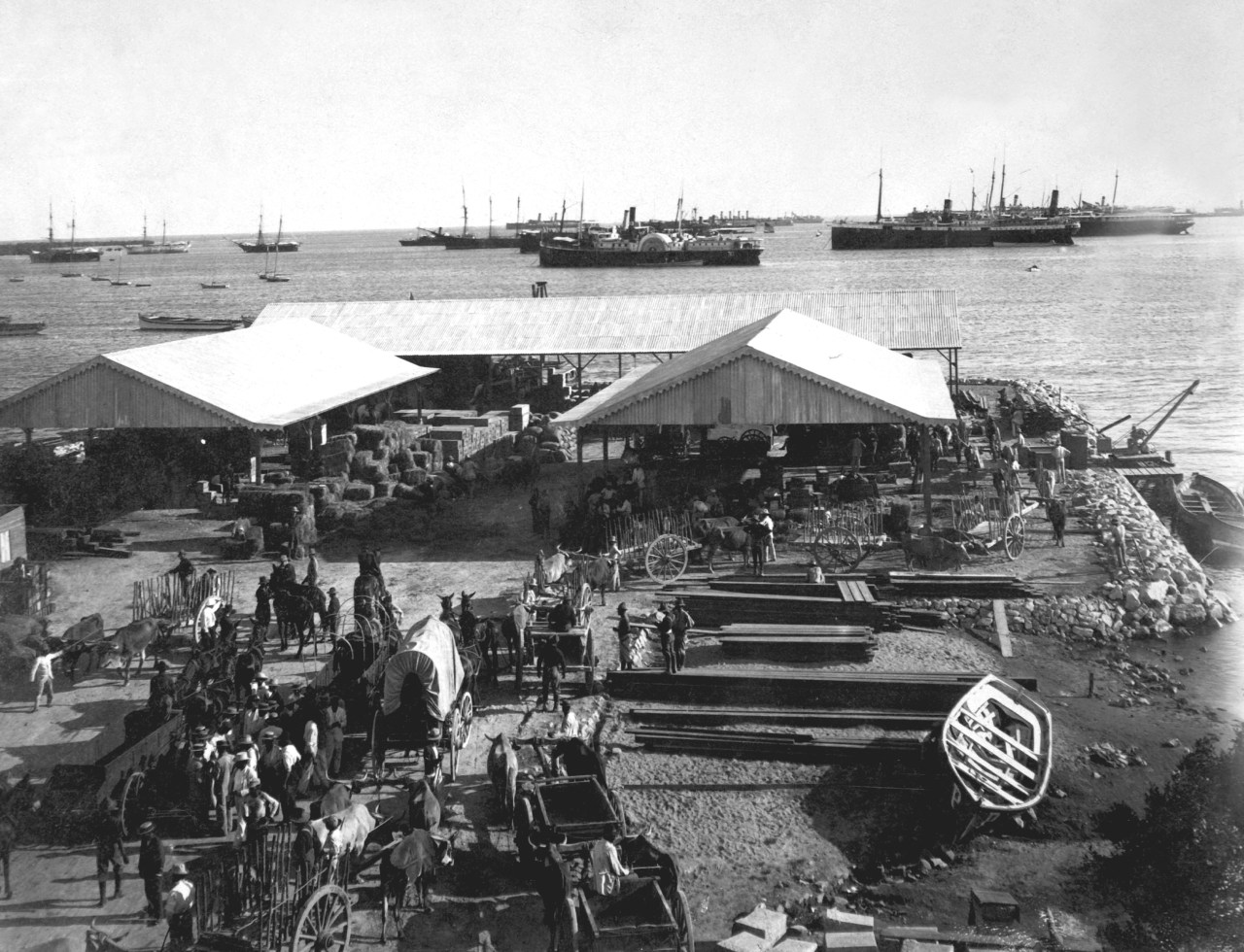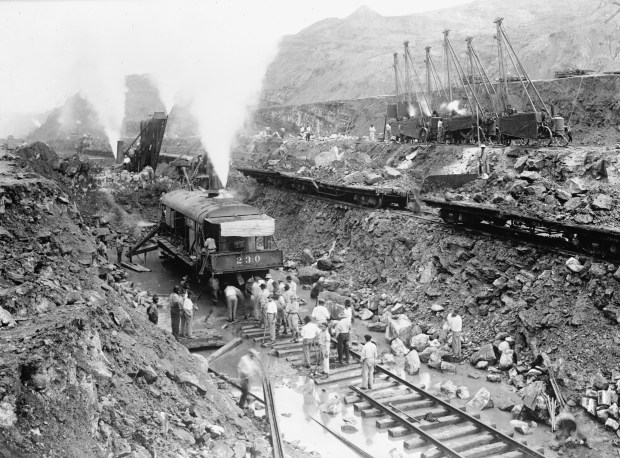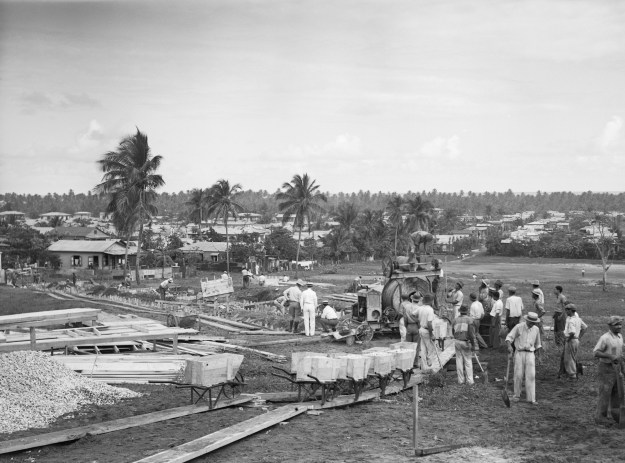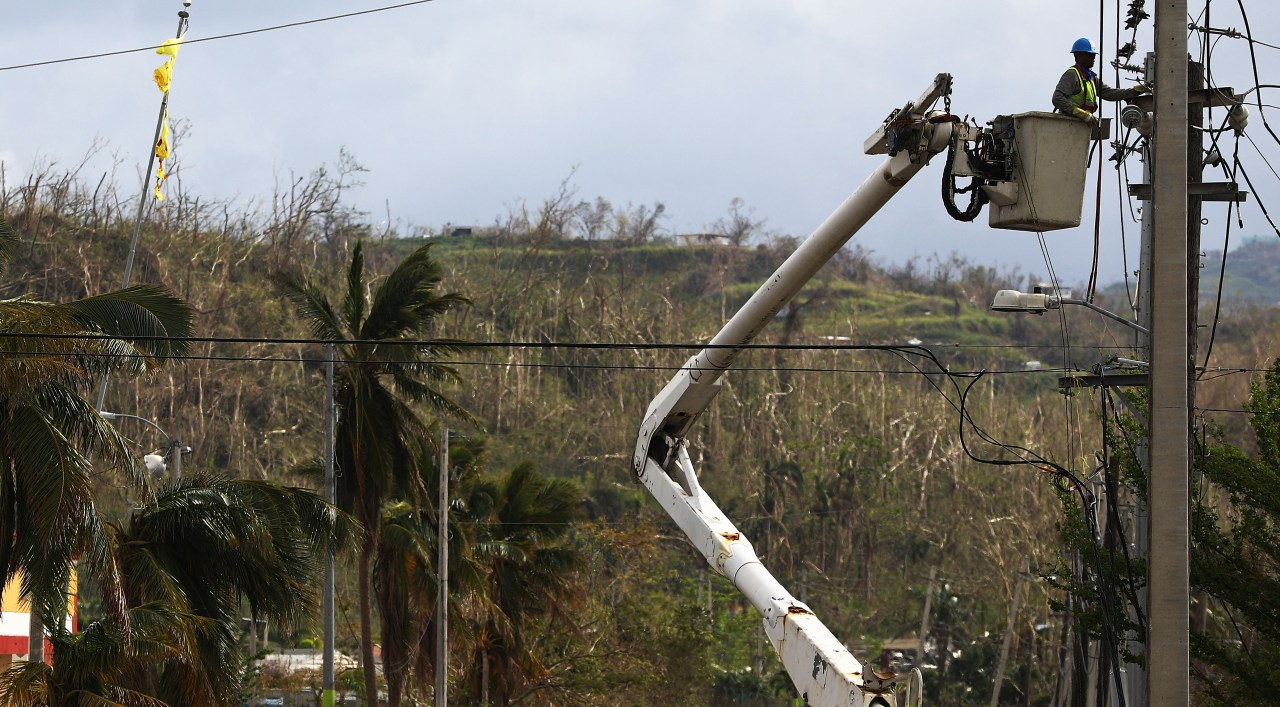As morally suspect as the timing of President Trump’s statements on Puerto Rico have been—tweeting that the government could not keep aiding the island “forever” in the middle of an acute humanitarian crisis, for example—he and the people of Puerto Rico can agree on one thing: Puerto Rico did have big problems before Hurricane Maria. Those problems did exacerbate the storm damage and its aftermath. It’s hard to weather a hundred-year storm when you start out with political powerlessness, crumbling infrastructure, crushing debt, and poor housing. However, Puerto Ricans know what Americans are rarely taught: Most of those problems were imposed by the United States. Here’s what you should have been taught about Puerto Rico.
Taxation without representation
It all starts with a raw deal, politically speaking. The island of 3.4 million people has been a territory of the United States since 1898, when Spain conceded its defeat in the Spanish-American War and granted its colonial possessions as spoils of war. According to a U.N. resolution of 1953, at the peak of the Cold War, the status of Puerto Rico was solved in July 1952, when the island nation’s constitution went into effect. The original version of the constitution granted the right to health, education, housing, and the right to work; but it was deemed too close to communism, so a few sections were removed by Congress. Puerto Ricans have been American citizens since 1917 but have never voted for the president or elected a voting congressperson. The colonial nature of the relationship between the U.S. and Puerto Rico has been discussed in the United Nations Decolonization Committee every year since 1971, and it approved in 2016 a call upon the United States to expedite the self-determination process for the nation. In the U.S. Congress, crickets.

In 1899 Puerto Rico was still under military rule, in order to secure the American occupation, when the San Ciriaco hurricane ravaged Puerto Rico’s land and economy. There were approximately 3,400 deaths reported, and many thousands left without housing, food, or work. The hurricane, along with other economic policies, destroyed the small but emerging tobacco and coffee industries and eased the path for the economic invasion of sugarcane industries. On April 12, 1900, Congress enacted the Foraker Act, Puerto Rico’s first governmental structure. That law started Puerto Rico off in a hugely subservient position. Despite a century of activism, Puerto Rican voting power is still largely local, and its constitution is still subordinate to the will of Congress. To take one bitter example, the Jones Act of 1920 ensured that Puerto Rico’s cabotage—transport of cargo between American flag ports—is subject to the United States’ merchant marine regulations. People in Puerto Rico, Hawaii, Alaska, and other island states and territories know that the Jones Act dramatically affects imports and the cost of living. A week after Hurricane Maria, President Trump authorized a 10-day waiver of the the Act in order to ease the transport of medicines and other emergency cargo.

Economic servitude
The Monroe Doctrine, which ruled international policy toward territories in the American continents starting in 1823, turned the U.S. military into the enforcer of North American business interests. Under the doctrine, Puerto Rico’s annexation solved the need for a shipping port and U.S. Navy base near the Panama Canal. The island also became a laboratory for exploiting a workforce without a long tradition of working-class organization and struggle. It was the perfect place to grow American businesses such as the tobacco and sugarcane industries, and it expanded the market for U.S. industrial and agricultural products. The relevance of the territory and its uses have varied over the years, but it has always been a paradise for exploitation and profit generation for mainland enterprises, even during crises.
The Statistical Abstract of the United States shows that by 1932, sugar production in Puerto Rico represented 20 percent of total production in the United States. According to Victor S. Clark, an economic historian during that time period, Puerto Rico’s cultivated land area doubled during the first 30 years of U.S. rule, while the number of agricultural landowners halved. Four mainland-based sugar corporations controlled most of the farmland. The book “Porto Rico: A Broken Pledge,” by Bailey W. Diffie and Justine Whitfield Diffie, claims that those four sugarcane companies owned 10 to 20 percent of the total wealth in the island. Sugarcane production and processing were the driving force of the Puerto Rican economy; by 1940 agricultural workers represented approximately 45 percent of the workforce.
After World War II, the government of Puerto Rico began Operation Bootstrap, a move to industrialize the island by tying the economy even more closely to the U.S. But if industrialization was seen as the key to moving away from the poverty and misery caused by the accumulation of wealth by foreign agricultural corporations, the solution just brought a different set of problems. The strategy provided tax exemptions to corporations as well as all corporate income, property, and even dividend assets in order to bring capital investment in the area of manufacturing. Tax exemptions and other financial incentives to mainland U.S. enterprises have been a permanent aspect of Puerto Rico’s economy ever since, depriving the island of resources and capital to grow the local economy. Now nearly 90 percent of Puerto Rico’s exports end up in the United States, while 55 percent of the imports come from American-owned corporations. In 2016, the total sales in goods and services represented $80 billion dollars, while purchases totaled $89 billion. In the last 10 years, the negative balance of payments have represented an economic loss of over $100 billion. That ratio reflects an unsustainable economy that needs imports to cover its basic consumption needs.
Housing woes
The right to decent and safe housing was a key aspect of President Roosevelt’s New Deal program, which aimed to lift up Americans during the Great Depression. In Puerto Rico the program granted housing and an acre of land to some impoverished farmworkers, while public housing projects moved people out of the slums. In 1973 the sudden rise in petroleum prices impacted the petroleum-dependent economy of the island, which resulted in an increase in the level of unemployment (from 11.9 percent in 1972 to 19.3 percent in 1976), a high level of inflation and a significant reduction in the production of goods. The economic stagnation turned the housing projects into a marginalized urban region where crime and prejudice against residents flourished. Although public housing projects provided high-quality housing with proper sanitary conditions, it stigmatized residents as poor or uneducated.
Private housing developments also began building concrete housing for working-class families, particularly in the suburb complex of Levittown and Puerto Nuevo. Young families that could not afford a concrete house but had access to land, either by inheritance or by occupation, built homes out of wood scraps or without proper professional support of engineers or architects. In the late 1980s a new stage of housing developments began opening up, thanks to the wealth that had accumulated in the tax-exempt bank accounts of U.S. corporations in Puerto Rico. The development of high-end housing backed by an ever-growing economy made way for the infamous housing bubble that burst in 2008. The resulting 10-year economic depression continues to choke professionals and the higher echelons of Puerto Rico’s working class, who lost their investments in overpriced housing.
A significant portion of the population has access to concrete housing, which is best suited to sustain hurricane winds, yet the economic depression may have reversed that trend. A recent wave of demolitions of housing projects, the high unemployment level, and the influx of immigrants from the Dominican Republic creates a market for low-quality housing. Before the hurricane many in Puerto Rico lived in unsteady houses, built over cliffs and ledges, and had no access to mortgages or loans. A month after Hurricane Maria, families still await FEMA tarps while banks retain a large inventory of evicted and unsold houses.


A sea of debt
You’ve heard about Puerto Rico’s public debt—now more than $72 billion. Public debt financed a series of infrastructure projects that expected a continually growing economy. In order to boost the economy in the late ’90s Pedro Rosselló, then governor of Puerto Rico, began construction of the metropolitan electric train, a superaqueduct that connects the urban area to the mountainous water supplies, among other construction projects. A coliseum built under this surge of construction projects houses the Center of Emergency Operations, where current governor Ricardo Rosselló runs day-to-day relief and recovery efforts. The argument in favor of all these projects was that construction was the basis for creating jobs. And there was economic growth, but it only lasted a few years. Section 936 of the tax code granted exemptions to earnings that American corporations generated in Puerto Rico. In 2005 the tax exemptions ended, corporations abandoned the island, and the economic recession that today haunts Puerto Rico’s economy began.
A series of political and administrative decisions also hampered the government’s ability to pay for all its expenses: privatization of the public health system that tripled government expenditure on health; the partial privatization of power production, the water authority administration, and the telephone company; the reduction in tax rates for the wealthy and corporations; and an increase in bureaucracy, corruption, and inefficient management. Under the eight-year tenure of Rosselló Sr., the debt increased from $13 to $23 billion. Since then all governors have financed their obligations by postponing payments, increasing the debt exponentially. Many organizations have called for a public audit of the debt, and some economists speculate that a large portion of the debt could be illegal.
This is the petri dish for Puerto Rico’s prehurricane crisis: a combination of austerity measures; a new sales tax; lack of economic development; an increase in unemployment, migration, crime, and violence against women and children; and unstoppable inflation. Each aspect of the economic and social crisis reinforces the previous one. Nearly 60 percent of the able-to-work population had no job prior to Hurricane Maria, and the ensuing electric power blackout (considered the largest in U.S. history) has many effectively unemployed and receiving no income.

Power problems
Puerto Rico had its first electric illumination system in 1893, and its first public power-generating plant in 1915. The need to power water pumps in order to serve the growing agro-industrial economy led to the development of the electric public authority. In time the Puerto Rico Electric Power Authority (PREPA) became the single entity that produced, sold, and distributed power to the entire island. Nearly a month after Hurricane Maria, PREPA reached only 20 percent of the consumption levels it had before the event, and around 30 percent of the island did not have access to potable water, mainly because of the lack of power to drive the water pumps.
Nearly 69 percent of the power production comes from oil, while the rest comes primarily from other fossil fuels and a small percentage from renewables. The Palo Seco power plant, third-largest plant in terms of power production, remains off the grid due to structural issues. It was built in the ’50s, but it was revamped in 2005. A group of community-based environmentalists called Toa Bajeños por el Medioambiente has warned that the closure of Palo Seco, which happened before the storm, won’t speed up sustainable energy but is just a Trojan horse for energy privatization and will therefore make power inaccessible to small rural communities.
Years prior to Maria the primary electric worker’s union warned of the risk PREPA was taking by following attrition and austerity policies. Maintenance of the power grid was almost nonexistent, as were equipment and supplies. The collapse of the power grid was preventable, and the repairs have taken longer than needed due to the inadequate policies applied to such a vital service. PREPA financial statements show a significant reduction in the maintenance budget: In 2007 it spent $251 million, while in 2014 that number was reduced to $202 million. During the last five years nearly 5,000 highly trained employees have retired or left the corporation—85 percent of those were linemen and power plant operators. Ángel Figueroa Jaramillo, president of the electric authority union, argued back in 2015 that the restructuring of the corporation granted a large portion of the budget to bond holders but dismantled services such as the removal of trees near power lines.
The hurricane death toll has increased precisely due to the lack of power and has put the majority of the population at risk. PREPA granted a $300 million contract, since rescinded, to a largely unknown Montana company, Whitefish Energy, to aid in the restoration efforts. It’s unclear where the island or its power grid will go from here, but without a fundamental reshaping of Puerto Rico’s relationship to the United States, much of this colonial history will simply continue to repeat itself.